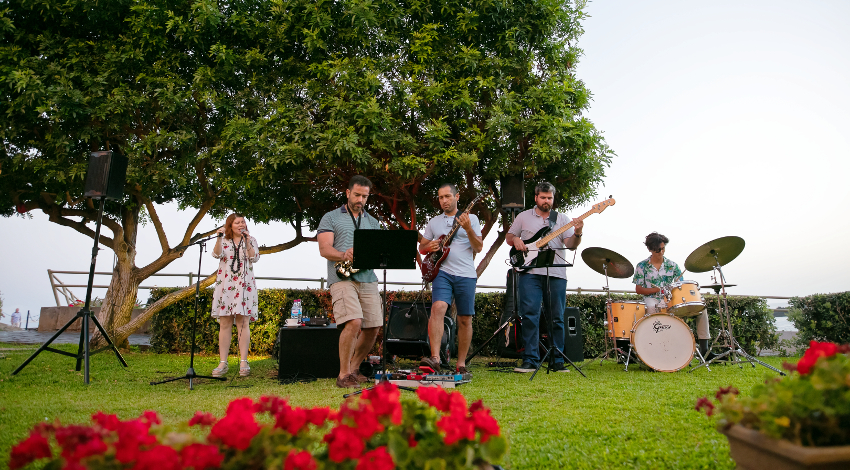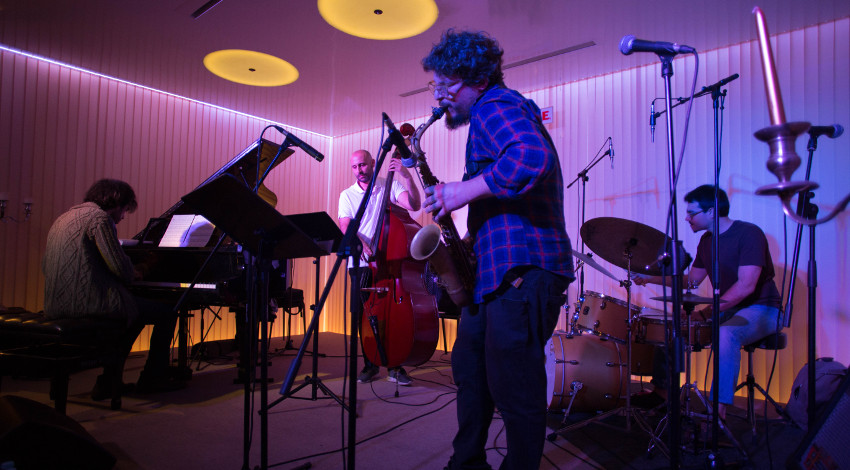In Madeira, there is not just an annual festival, there is enough jazz for the whole year thanks to a new generation of musicians who have come to own a place on the great stages.

Jazz is part of Madeira Island’s musical fingerprint. This is reflected in the Funchal Jazz Festival, an event that brought together 6 thousand people for its 2017 edition at Parque de Santa Catarina offering a fine selection of national and international artists.
But jazz has an impact that goes well beyond that. It is listened to in Madeira over the whole year and there are many establishments paying tribute to the musical genre born in New Orleans. To understand its complexity and how it is experienced on the island one needs to look at its history.
It took its first steps in America, voicing the spirit of the post-Great Depression society. The genre travelled to Europe and established itself here in the context of overcoming WWI. It is not by chance that the ‘jazz era’ coincided with the ‘roaring 20s’, the decade of freedom and prosperity.
Madeira was not left out of this frenzy. Back in the 1930s there was already ‘a strong presence of live music groups like Jazz Bands which can be seen in newspaper clippings or in adds for night entertainment establishments’, notes Vítor Sardinha, teacher and researcher in the field of music.
Jazz was listened to and lived in ‘the Victoria, Pavão and Vigia casinos, at the Cabaret Tivoli or in the Flamingo and Solar da Dona Mécia Clubs, not to mention the Savoy Hotel or the Reid’s Hotel’. But the best examples is still the ‘Nights of Madeira’, between 1945 and 1989.
Unsurprisingly, this trend has withstood time. Jazz jumped out of hotels and into the Jazz Club, in 1980, and other new live music bars such as the Salsa Latina, in 1990. Nowadays ‘it can also be found in clubs, bars, hotels, Casino da Madeira, the excellent international Funchal Jazz Festival and the programme in Jazz at the Conservatory of Madeira (CEPAM)’ where several music auditions are held, with free entrance.
For Vítor Sardinha, who has come to work on the history of jazz in Madeira, the genre is alive on the island: ‘People listen to, play and talk about it mentioning features or citing genres, styles, musicians and stories around it. This simple point is enough to understand its present and future’.

There are also those who turn it into a lifestyle. Luís Filipe Gonçalves, currently in his 2nd year of the jazz programme at CEPAM believes ‘there’s more jazz and more entities investing’. He feels it ‘is fashionable, not in the experimental sense’ but that it is more divulged. He also mentions how ‘there isn’t a single container apprehended in the programme, it’s necessary to have a certain proximity to the musical style and get involved with it’.
Diana Duarte, also in her 2nd year, holds that jazz exists all year round though it could do with more visibility. In her opinion, Madeira gathers the adequate conditions for the organisation of festivals other than in the summer.
She notes how, while there is ‘a certain bias towards jazz, having to be all dressed up and sipping a cocktail’, in reality it has changed and there is no single kind of place to listen to jazz. It ‘doesn’t have to be elitist, there’s a lot of feeling involved’ and it has everything ‘to reverberate in others’.
In conversation, Diana Duarte mentions a ‘boom on all musical fronts’, how the public seeks something more ‘organic’ and is more open to ‘other kinds of music’. Where jazz is concerned, ‘it is a style that requires a lot of work, on the spot. People have started to grasp its complexity’.
The SCAT Music Club & Restaurant, the genre’s ambassador in Madeira, so to speak, is an example of continuous investment. The Funchal Jazz Festival’s jam sessions take place here, every year, offering an opportunity for the young Madeiran musicians to play, shoulder to shoulder, with the big names in jazz.












